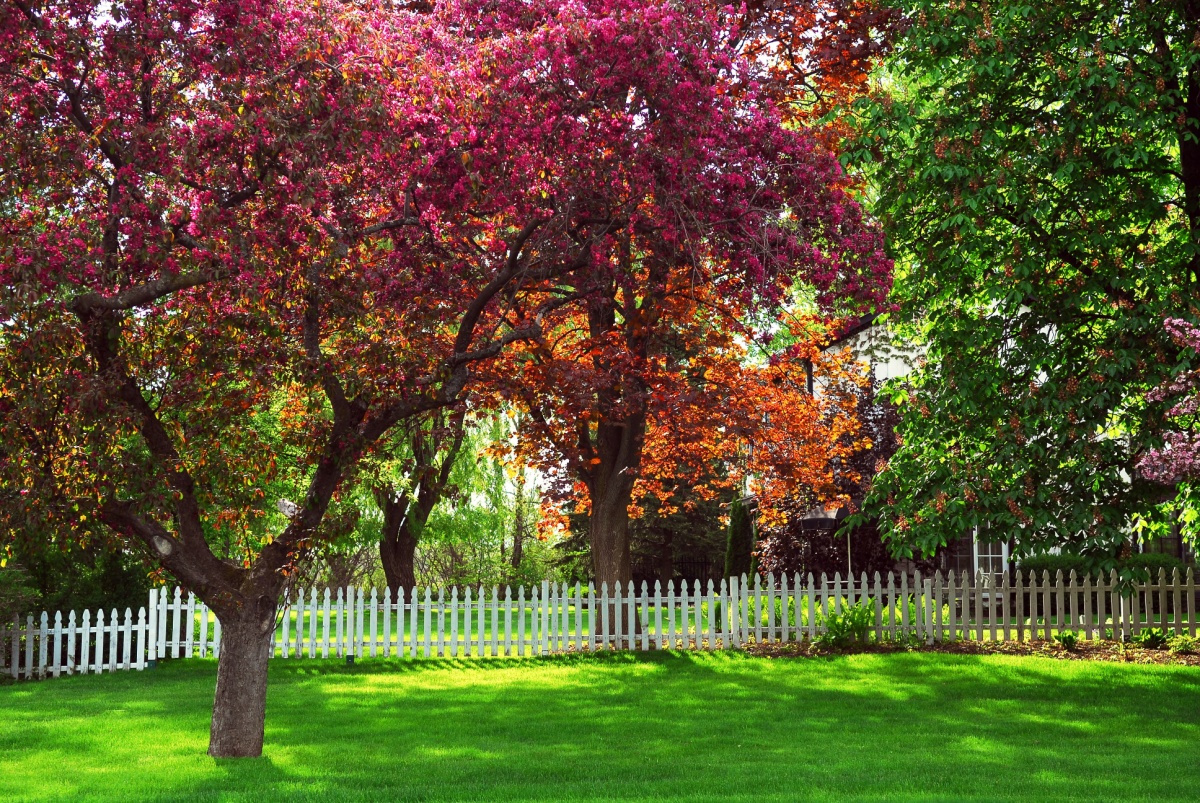
If you love the trees on your property and have even placed sentimental value on one or two, you want to do everything in your power to protect them. And if you ask any tree care professional, they’ll tell you that one of the best ways to protect your trees is with regular pruning. It may seem counterintuitive at first — how exactly can removing parts of a tree possibly make it healthier? —- but we’re here to explain exactly how pruning improves tree health and why it should be an essential part of your tree care routine.
The Main Purpose of Tree Pruning
Before we get into how pruning boosts tree health, we need to make a distinction between tree trimming and pruning. While trimming focuses on cutting branches to enhance the aesthetics of a tree, pruning is a targeted process that involves removing specific limbs to improve the tree’s structural integrity and long-term vitality.
When pruning a tree, certified arborists assess which parts of the tree are dead, diseased, overcrowded, or interfering with healthy growth patterns. With this information, they make calculated cuts to open up the canopy, lighten the load, and stimulate stronger, more balanced development.
While a well-pruned tree often looks more attractive, the main objective is to support biological function and resilience. This means, when done correctly, pruning creates healthier trees that are better equipped to withstand storms, disease, and the test of time.
The Incredible Benefits of Tree Pruning
Now that we’re on the same page about what tree pruning is, we can take a closer look at how exactly pruning improves tree health.
Removes Dead or Diseased Branches
Let’s start with a simple truth: dead and diseased branches pose a major threat to the overall health of a tree. These branches can harbor fungi, bacteria, and pests that spread to the healthy portions of the tree if left unchecked. By removing them through proper pruning techniques, certified arborists effectively halt the spread of decay and disease, giving the rest of the tree a fighting chance.
Promotes Growth
Neglected trees may become lopsided or too top-heavy, putting them at risk of splitting or falling during storms. Routine pruning helps prevent this overgrowth and redirects energy to the healthier, more robust branches. This makes the tree more structurally sound and able to grow in a balanced, natural way.
Enhances Air Circulation and Sunlight Exposure
Have you ever noticed how thick, overcrowded branches seem to create dark, musty spots on a tree’s bark or leave the bottom of the tree looking sickly? Limited air circulation and poor sunlight penetration can create the perfect breeding ground for disease. By thinning out the canopy and allowing more light and airflow through the tree, you help reduce the chances of fungal infections and pest infestations.
Reduces the Risk of Storm Damage
A sudden storm can be brutal to a tree that hasn’t been maintained. Large, unwieldy limbs are more likely to snap off during high winds or heavy snowfall, which not only damages the tree but can also create dangerous conditions for people, homes, vehicles, and the surrounding landscape. Pruning removes vulnerable or loosely attached limbs before nature has the chance to do it for you — and in a much messier way.
The Dangers of Tree Topping
While we strongly encourage homeowners and property managers to invest in tree pruning, we do not recommend attempting this task on your own or hiring just anyone for the job. After all, when it comes to tree care, not all cutting is good cutting. This is one of the reasons you need to be cautious of companies that offer “tree topping.” This technique involves removing the top of a tree to reduce its height, often leaving behind large, stubby limbs.
Topping puts incredible stress on a tree, and the woody plant responds with frantic, weak growth that is more susceptible to disease, insects, and structural failure. Worse still, the wounds created from topping rarely heal properly, leaving the tree vulnerable for years to come.
If someone recommends topping your tree, don’t move forward with the service. Instead, call an ISA-certified arborist from All About Trees for proper pruning.
For Proper Tree Pruning, Call All About Trees
As Springfield Metro’s trusted arborists, we take pruning seriously. We know the incredible impact it can have on tree health and longevity and promise to develop a plan that encourages your tree’s natural growth, improves structural integrity, and promotes overall vitality.
So, if you want to experience firsthand how pruning improves tree health or want to know more about the signs you need tree pruning, contact our team and schedule a tree inspection. We will help you protect the plants that bring so much joy and beauty to your property.
